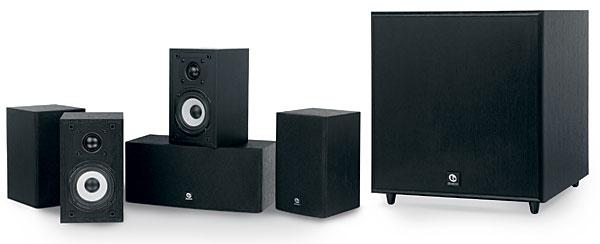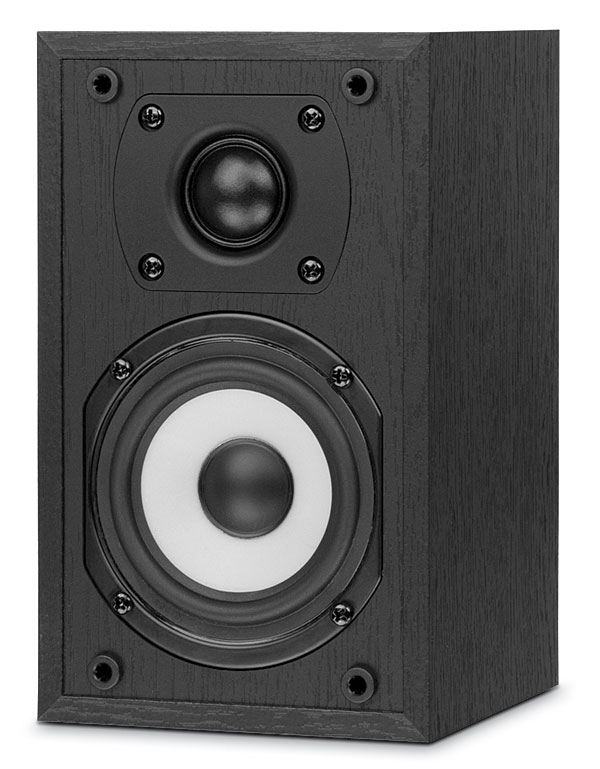Boston Acoustics Classic Series 2300 II Speaker System

There are two schools of thought about speaker design for movies and music. The purist approach is that the fundamentals of performance affect both equally—what’s good for music is good for movies and vice versa. On the other hand, the pragmatic approach calls attention to the differing demands of movies versus music, suggesting that your choice of speaker should be optimized for one or the other, whichever you care about more.
Movies, usually mixed in surround, require a system to produce high volume levels, surround envelopment, lifelike and intelligible dialogue, strong bass effects, and a smooth top end to make the more aggressive elements palatable. Music, typically mixed in stereo, requires top-to-bottom balance, stable imaging to produce a centered vocal image from two channels, deep and lean bass, and plenty of air at the top end to resolve the instruments’ upper harmonics and convey sonic space.

It’s easy to pick apart each position. Some music thrives on brute force. And a decent movie soundtrack nowadays often embodies hi-fi values better than almost any music at the top of the charts, since the latter is compromised as a result of excessive compression and equalization.
Even so, the two schools of thought give us a frame of reference for describing speakers. And the Boston Acoustics Classic Series II definitely leans to one side of this limited but convenient dichotomy. To me, these are movie speakers, smooth entertainers designed to make sense of surround soundtracks. Not that they’re bad for music—their smoothness also makes them suitable for the listener who wants a relaxing experience—but their embodiment of the hi-fi verities is decidedly selective.
Roman Numeral II
Boston Acoustics is a historic name in speakers and is currently under the ownership of D&M Holdings, the steward of Denon, Marantz, McIntosh, and other audio brands. As the Roman numeral implies, the Classic Series II is the second iteration of a product line introduced in 2008. It ranks below the topof-the-line VS Series, the more conventional Reflection Series, and the gloss-paneled A Series. I’ve reviewed all of them, except for the original Classic, and have been consistently impressed by the level of performance Boston squeezes out at challenging price points. The brand also covers other bases, including soundbars, in-walls, on-walls, car audio, and personal audio.

The Classic Series II includes the CS 260 II floorstanding speaker, a two-way design with dual 6.5-inch woofers ($200 each); two bookshelf models, the CS 26 II with a 6.5-inch woofer ($150 each) and CS 23 II with a 3.5-inch woofer ($100 each); the CS 225C II center with dual 5.25-inch woofers; and the CS Sub10 II subwoofer ($300). Under review here is the CS 2300 II five-channel surround package ($580), which uses a quartet of the smaller satellite-size bookshelf model plus the CS 223C II center, not available separately. That adds up to five channels. To bring the system into 5.1-channel territory—a must with 3.5-inch woofers all around—Boston tossed in the CS Sub10 II, so the price tops off at an affordable $880.
These speakers are as plain as can be, without the VS Series’ unusual bell shape or the Reflection and A Series’ glossy finishes. They are simple rectangular solids wrapped in wood-grain Black Walnut vinyl (also available in Cherry vinyl). On the back are some respectable gold-nut binding posts and a bolted-on keyhole mount that protrudes by a quarter-inch to allow room for cables if you opt for wall mounting.
The driver array includes a soft-dome tweeter with a Kortec diaphragm made of a stiffened, woven polyester material. Boston says this approaches the highfrequency extension of metal domes without the harshness. Let me put that into context: Some metal-domed tweeters can be harsh, but they vary widely in both performance and voicing. The woofers—one in each of the satellites and two in the horizontal center—utilize graphite-injected polymer cones. The woofers feature a Deep Channel Design that uses, as Boston explains, “a deeply grooved pole plate that enables the voice coil to travel farther, for greater output without bottoming.” Let me put that into context: There’s only so much you can do with a 3.5-inch woofer, so you’ll need the cone to move as far as it can to deliver all the output it can muster. Also, sat/sub sets with such small woofers need a higher crossover to the sub. Nature of the beast. I ran the Classic II at a crossover of 100 hertz, higher than the 80 Hz I normally prefer with larger monitor speakers, but lower than the 120 Hz (or more) the most bass-limited satellites demand.




























































